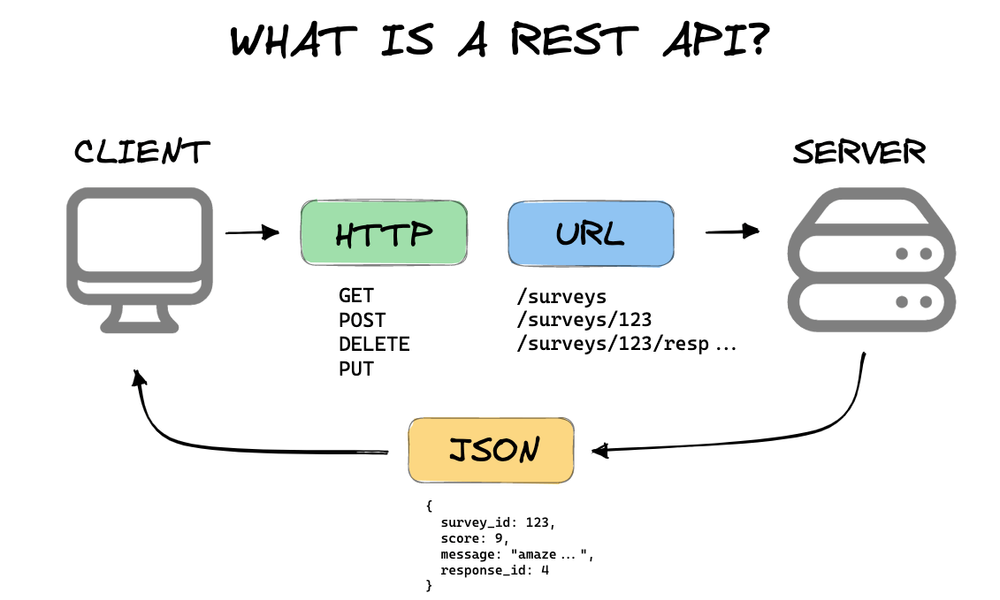Understanding REST APIs: A Practical Guide
REST (Representational State Transfer) APIs are a cornerstone of modern web development. They allow different applications to communicate with each other over the internet, enabling the creation of scalable, efficient systems. In this post, we'll dive into how REST APIs work, focusing on the most common HTTP methods—GET, POST, PUT, DELETE—and providing practical examples.

What is a REST API?
A REST API is a set of web services that adhere to the REST architectural style, providing a way for applications to interact with each other using standard HTTP protocols. RESTful services are stateless, meaning each request from a client to the server must contain all the information needed to understand and process the request.
Common HTTP Methods in REST APIs
- GET: Retrieves data from the server.
- POST: Submits new data to the server.
- PUT: Updates existing data on the server.
- DELETE: Removes data from the server.
Practical Examples
GET Request
A GET request retrieves data from the server. Here's an example using Golang:
package main
import (
"fmt"
"net/http"
"io/ioutil"
)
func main() {
response, err := http.Get("https://api.example.com/data")
if err != nil {
fmt.Println(err)
return
}
defer response.Body.Close()
body, err := ioutil.ReadAll(response.Body)
if err != nil {
fmt.Println(err)
return
}
fmt.Println(string(body))
}
POST Request
A POST request is used to send data to the server. Here’s how you can do it in Golang:
package main
import (
"bytes"
"fmt"
"net/http"
)
func main() {
jsonStr := []byte(`{"name":"John","age":30}`)
response, err := http.Post("https://api.example.com/data", "application/json", bytes.NewBuffer(jsonStr))
if err != nil {
fmt.Println(err)
return
}
defer response.Body.Close()
fmt.Println("Response status:", response.Status)
}
PUT Request
A PUT request updates existing data on the server. Here's an example:
package main
import (
"bytes"
"fmt"
"net/http"
)
func main() {
jsonStr := []byte(`{"name":"John","age":31}`)
req, err := http.NewRequest(http.MethodPut, "https://api.example.com/data/1", bytes.NewBuffer(jsonStr))
if err != nil {
fmt.Println(err)
return
}
req.Header.Set("Content-Type", "application/json")
client := &http.Client{}
response, err := client.Do(req)
if err != nil {
fmt.Println(err)
return
}
defer response.Body.Close()
fmt.Println("Response status:", response.Status)
}
DELETE Request
A DELETE request removes data from the server. Here’s how you can do it:
package main
import (
"fmt"
"net/http"
)
func main() {
req, err := http.NewRequest(http.MethodDelete, "https://api.example.com/data/1", nil)
if err != nil {
fmt.Println(err)
return
}
client := &http.Client{}
response, err := client.Do(req)
if err != nil {
fmt.Println(err)
return
}
defer response.Body.Close()
fmt.Println("Response status:", response.Status)
}
Conclusion
REST APIs provide a flexible and scalable way to build web services. Understanding the basics of HTTP methods like GET, POST, PUT, and DELETE is crucial for any developer working with APIs. By mastering these concepts and using them effectively, you can build powerful, efficient, and reliable web applications.
